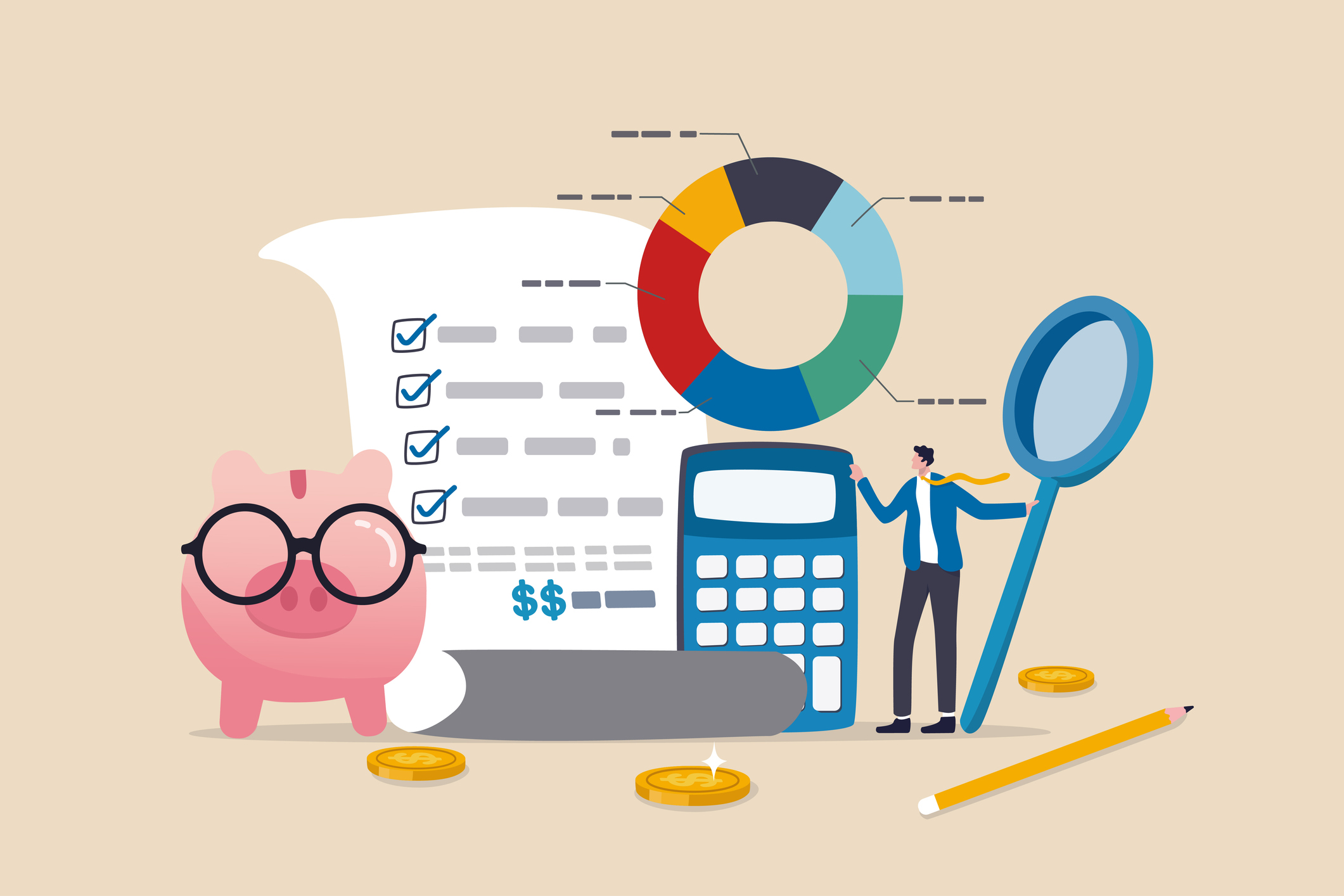You’ve figured out your budget, your retirement nest egg is substantial, and you’re ready to make the transition to living savings instead of income from work. Have you thought through the tax implications of moving from a W2 to a 1099R?
It’s very common for tax planning to be overlooked. After all, the common wisdom is that you’ll be in a lower tax bracket during retirement than you were when you were working. This isn’t necessarily the case. In fact, a recent study found that 57% of Americans rarely consider the taxes they will pay/are paying in retirement.1 This can be an expensive mistake.
A New Tax Landscape
Your retirement tax bracket is derived from your total combined income from all sources. This includes pension income, retirement plan distributions, part-time work (if any), capital gains, taxable interest and dividends, portions of your social security, and rents/royalties from any land or real estate you might own. Everything in this list is taxable to some degree.
Up to 85% of your social security payment could be subject to Federal income tax. Your pension and retirement plan distributions are 100% taxable since these were funded using pre-tax dollars (Roth IRA is the notable exception). Interest income from your taxable accounts and rents received are usually taxed like income from a job, though capital gains are taxed at a more favorable rate.
Its important to keep track of where the money is coming from and in what quantities. If your income is high enough this could impact certain tax credits and deductions, including Social Security and Medicare. For example, your Medicare Part B Premium is means tested. Earning over certain thresholds will increase your monthly premiums.
Lifestyle Tactics to Lower Your Tax Bill
The first step to reducing your potential tax bill is to lower your income needs. Paying off or paying down your debts prior to retirement, including your mortgage, can go a long way to accomplishing this. Lower debt payments mean lesser withdraws from taxable accounts to pay off that debt. This could mean re-jiggering budgets or putting off discretionary expenses during the last years of working, but the feeling of going debt-free into retirement is hard to discount.
Downsizing and moving in retirement is another idea worth considering. Nine states – Alaska, Florida, Nevada, New Hampshire, South Dakota, Tennessee, Texas, Washington, and Wyoming – have no state income tax. Relocating to a lower tax jurisdiction can give your retirement savings a boost.
Using charitable contributions to lower your bracket
Charitable donations can also move the needle in a powerful way. Under current law, you are required to start taking distributions from your retirement accounts at age 72 (Roth IRAs excluded). These distributions are taxable and can pose a problem if your needs are already met with other income sources. Qualified Charitable Distributions (QCDs) may be the answer.
A QCD is a direct transfer of funds from your IRA to a named charity. These satisfy your required minimum distributions for the year but do not trigger any taxation for you. This may not seem any different than just donating money directly from your bank account, but the devil is in the details.
Donating from a bank account would require you to itemize your deductions in order to get a tax benefit. The increased standard deduction that came about in 2017 means you may not itemize any more, which would preclude you from getting a tax benefit from that donation. A QCD doesn’t require you to itemize. You get the full value of the donation regardless of whether you itemize or take the standard deduction.
Donor Advised Funds (DAF) are another charitable concept worth mentioning. You receive a charitable deduction for all property contributed to this type of account, though you don’t have to name a charity at the time you donate. You can donate appreciated securities to this account in year one and distribute to the charity in year two. It’s very flexible.
A DAF works best when you donate highly appreciated securities. This is the stuff that would force you to recognize a big gain if you sold it yourself. You could, for example, lump (or bunch) several years’ worth of contributions into the DAF in a single year while you distribute them evenly over the next few years. This could allow you to itemize in one year to get the benefit of a big contribution while taking the standard deduction over the next several years, thereby reducing your tax liability through some careful planning.
Investment Strategies for Managing Income
Asset allocation is a strategy for diversifying your accounts across investment types. Asset location refers to a strategy for placing investments in accounts where they have the potential to lower your tax liability.
Taxable accounts, such as brokerage accounts, should hold tax-efficient investments. These include stocks you will hold for more than a year; tax-exempt municipal bonds; and index funds. Tax-deferred accounts are good homes for tax-inefficient investments. These include taxable bonds, commodities, some alternatives, and other actively managed strategies.
Harvesting capital losses can also reduce taxes in taxable accounts. Tax loss harvesting is the practice of selling a security that has experienced a loss. By realizing, or “harvesting” a loss, investors can offset taxes on both gains and income. The strategy is most effective if you have already realized short term capital gains or know you will have them before year end. This is because short term gains are taxed like income from a job while long-term gains are taxed at more favorable rates.
You can offset gains with losses in any given year and use up to $3,000 of those losses to offset ordinary income. Any capital losses that aren’t used can be carried forward to the next tax year until they’re all used up. The sold security is typically replaced by a similar one, maintaining an optimal asset allocation and expected return.
A word of caution on this strategy. A situation where it might be best to avoid tax-loss harvesting is if your long-term capital gains rate is 0%. In this scenario, it actually might be best to “tax-gain harvest,” which means selling investments with long-term capital gains and immediately repurchasing the same investment. There is no 30-day waiting period to repurchase a similar investment when realizing gains.
Taking the long view with a Roth Conversion
Be thoughtful about where your income is sourced if you have both a Roth IRA and a Traditional IRA. Distributions from Roth IRAs generally work best in years when your income (and subsequent tax bill) is high. A year where you have a home sale or a large medical bill that forces you to dip into savings may be a good year to withdraw from your Roth IRA, which offers tax-free distributions.
Converting to a Roth IRA may also be a good strategy – but you’ll need to think through when and how much you’ll convert. Conversions are 100% taxable so your upfront tax bill could be quite large if you’re not careful. Staggering the conversion over several years can make it more manageable.
This strategy doesn’t lower your tax bill in the current year. In fact, it increases it. But it does reduce the amount of money you have in your pre-tax accounts, which reduces the amount of money you’ll be forced to withdraw for required minimum distributions at age 72. Roth IRAs do not have any required minimum distributions. This strategy can reduce taxes over a long horizon when done correctly.
The Bottom Line
Retirement planning doesn’t stop with creating an investment strategy to generate the income you want. Carefully thinking through the tax implications and making tactical moves to keep income as tax-advantageous as possible can have a lasting impact.
1. The 2021 Nationwide Retirement Institute Tax-Efficient Retirement Income Survey. The Harris Poll. March 25, 2021.
This work is powered by Seven Group under the Terms of Service and may be a derivative of the original. More information can be found here.










